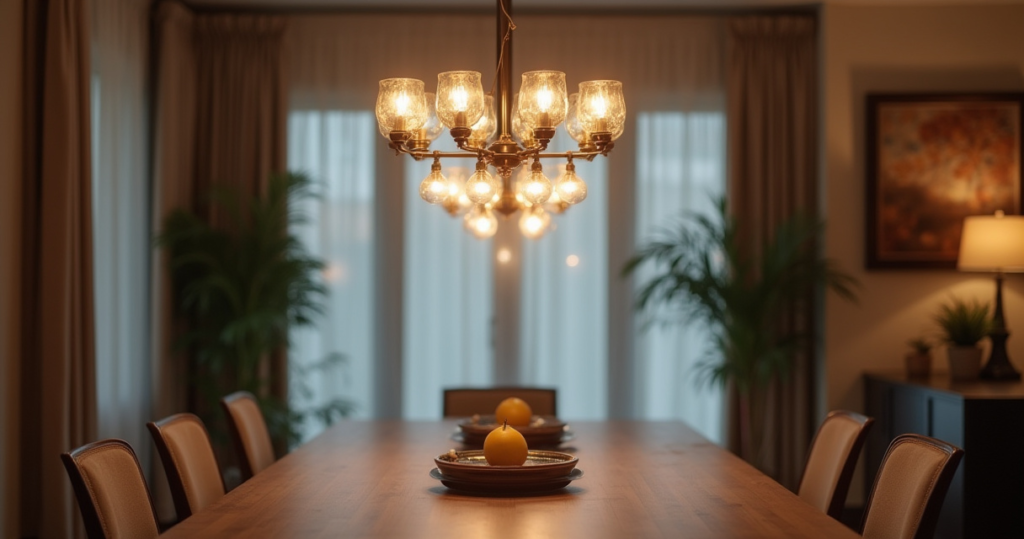You know what people always ask me about design? It’s not about paint colors or sofa fabrics. They ask me how to make a space feel like theirs. How to weave in the story of who they are, where they’ve been, and where their family comes from, without it looking like a cluttered museum.
My answer often starts in the dining room, hanging right over the table. The chandelier. It’s so much more than a light fixture. In my Polish babcia’s home, it was a massive, brilliant crystal declaration of hospitality. For my Chinese grandmother, light was about creating a soft, harmonious glow for the family to gather under. For me, a chandelier is the heart of the home, the narrator of your cultural story. But there’s a way to do it right, so it feels soulful and authentic, not like you just clicked “buy” on a trend.
Let’s cut through the noise. Here’s what actually matters.
Foundations: Planning Your Perfect Chandelier
Before you even think about crystal versus brass, you have to get the foundation right. This is the unglamorous part, the part everyone wants to skip. Don’t. Getting these basics right is the difference between a room that feels harmonious and one that just feels… off. It’s about respecting the space and the objects you bring into it.
1. Calculate the Perfect Chandelier Size for Your Dining Table.
Everyone throws out this rule: the chandelier should be one-half to two-thirds the width of your table. And sure, that’s a great starting point. For a 42-inch wide table, you’re looking at something between 21 and 28 inches in diameter. It’s a good mathematical check. But this formula completely ignores the most important factor: visual weight.
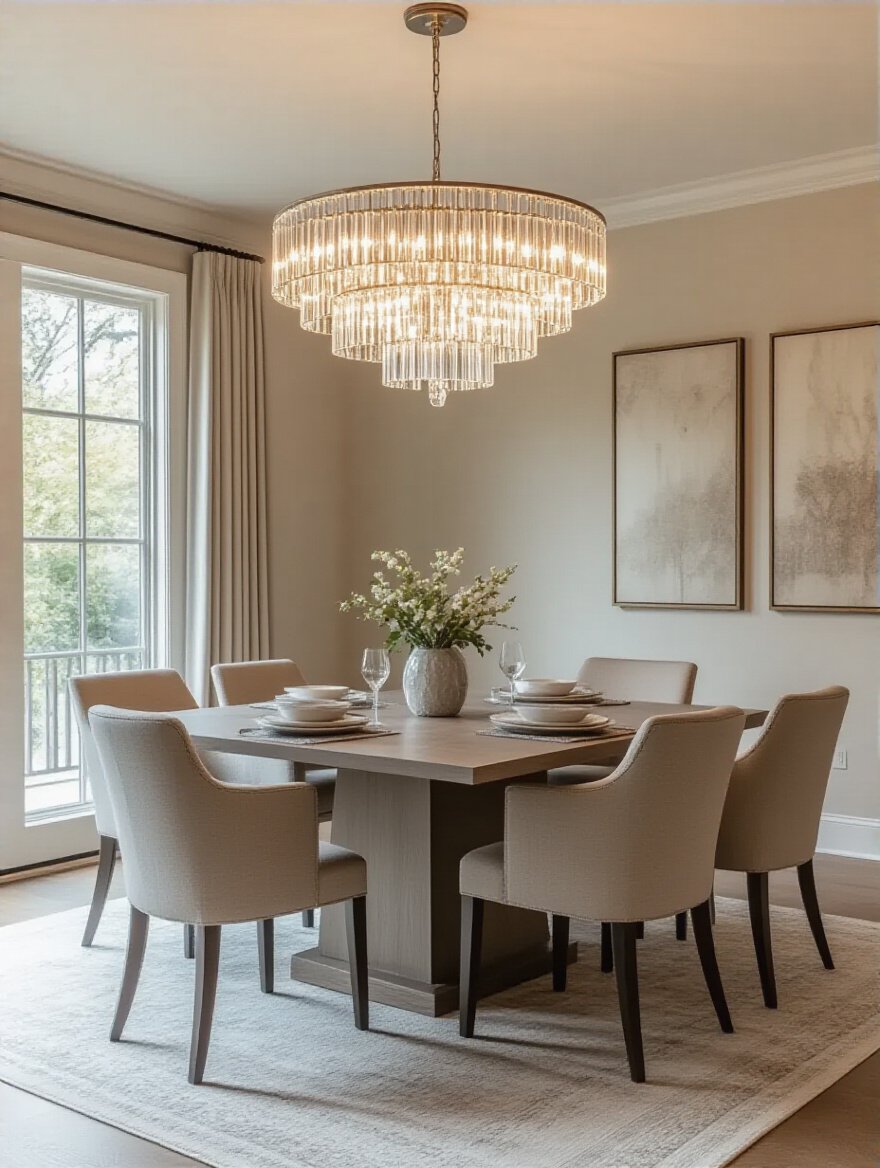
A delicate, airy wire-frame chandelier that’s 28 inches wide will feel vastly different than a heavy, dark, eight-arm wood-and-iron chandelier of the same size. The first one floats; the second one dominates. This is where you have to trust your eye. A heavy piece, like something you’d find in a Polish mountain home, might need to be on the smaller side of the rule, while a light, ethereal piece, like a Chinese silk lantern, can be on the larger side without overwhelming the space. The math gets you in the ballpark; your gut tells you if it’s a home run.
2. Master the Ideal Chandelier Hanging Height for Optimal Light.
The standard advice is to hang the bottom of the chandelier 30 to 36 inches above your tabletop. This is to keep it out of your direct line of sight so you can actually see the people you’re eating with. It’s solid advice. But I’ve learned the hard way that a few inches can make a world of difference. It’s not just about sightlines; it’s about the quality of the light itself.
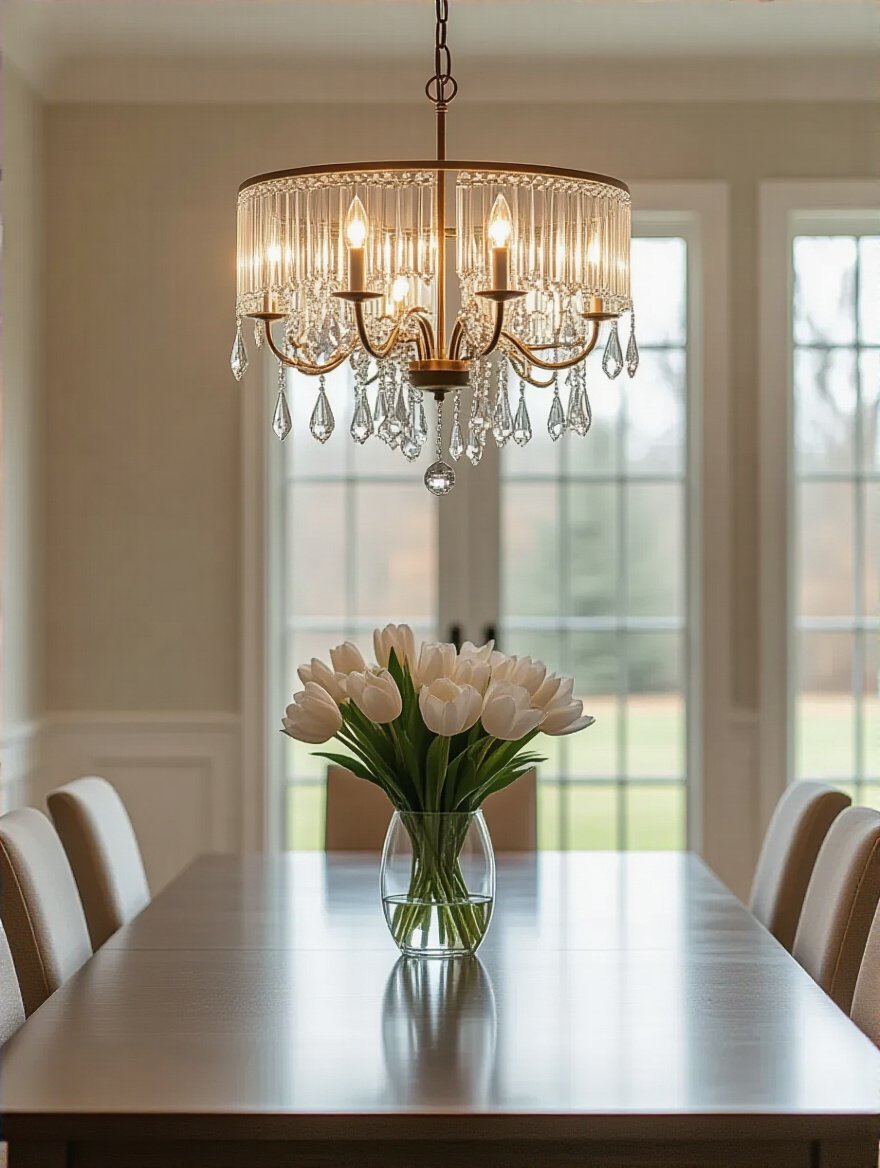
I once worked with a client who hung their fixture at 30 inches, right by the book. But the bulbs were exposed, and the light felt like an interrogation lamp. It was harsh and created unflattering shadows. We raised it just four inches, to 34, and suddenly the light spread, softened, and the whole mood changed. My shortcut? The “Conversation Test.” Have someone hold the chandelier at the proposed height. Sit at the table. Can you see your friend across from you? Does the light feel like a warm invitation or a spotlight? Your comfort is the only metric that matters.
3. Determine Your Room’s Lumens Need for Ample Dining Illumination.
Forget about watts. Watts measure energy use. We need to talk about lumens, which measure actual brightness. The technical way to do this involves multiplying your room’s square footage by 30 or 40 to get a lumen target. This is useful, but it’s a bit clinical for a space that’s supposed to be about connection.
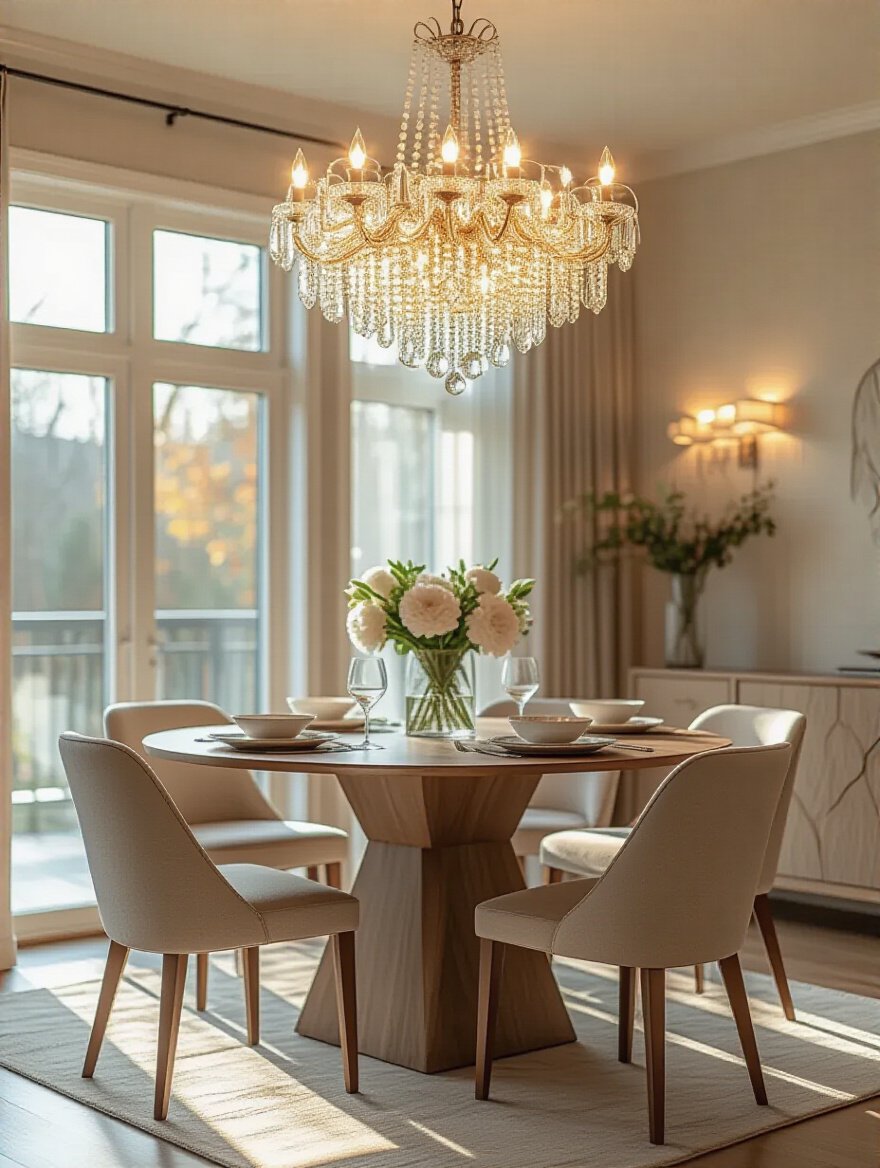
Here’s a simpler way to think about it: What do you do in this room? If your dining table is also the kids’ homework station and your project workspace, you’ll need more lumens—a brighter, more functional light. If it’s strictly for intimate dinners and conversations, you can get away with a softer, lower-lumen glow. The best solution, of course, is to get a fixture that can provide the higher lumens you sometimes need, and then put it on a dimmer. That way, you’re in control of the energy in the room, shifting from task-oriented to intimate with the slide of a button.
4. Establish a Realistic Budget to Guide Your Chandelier Selection.
Let’s be honest. It’s easy to fall in love with a stunning, four-figure chandelier. But a budget isn’t a buzzkill; it’s a framework for creativity. What most people forget is that the price on the tag is not the final price. You need to factor in the cost of an electrician for installation, which can be several hundred dollars, especially if you have high ceilings or need a new support box.
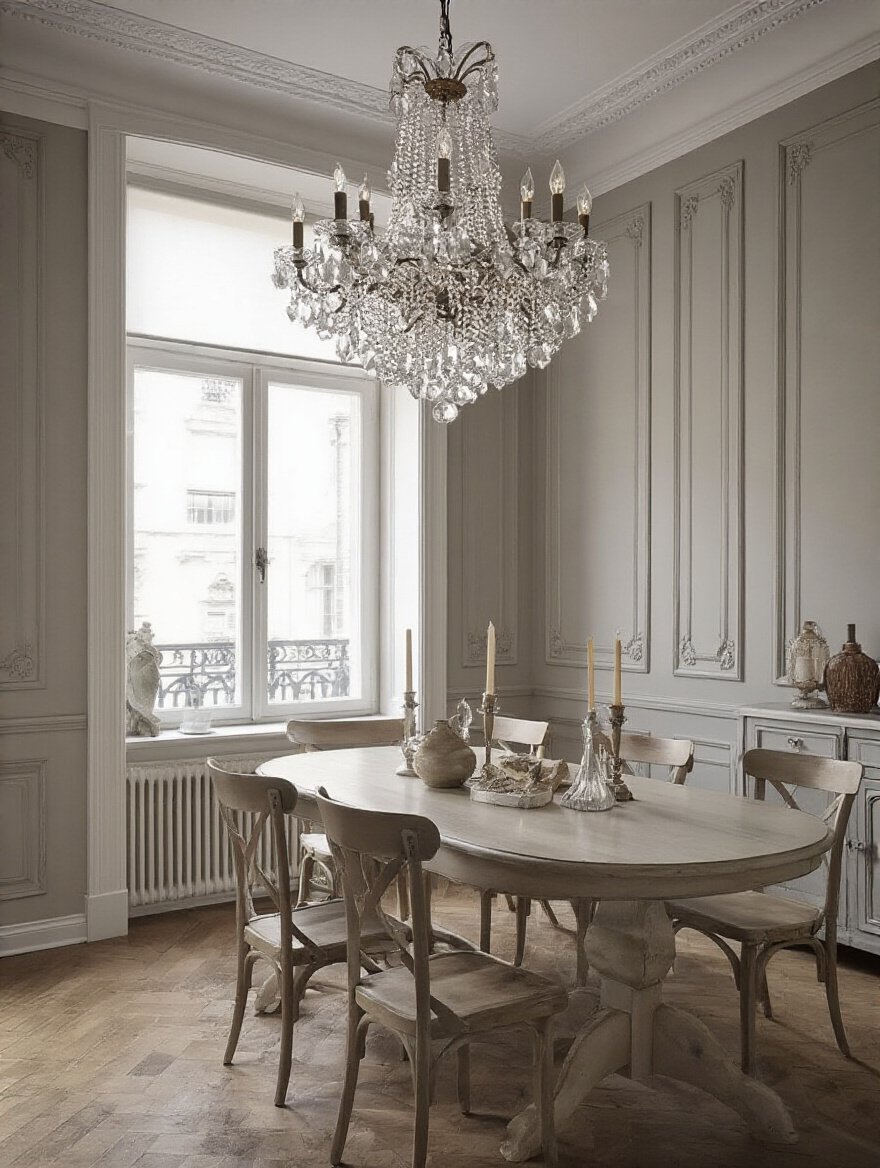
Then there are the bulbs. A fixture with twelve arms needs twelve bulbs, and if you’re choosing beautiful, high-quality LEDs, that adds up. And please, please budget for a dimmer switch. Think of your chandelier not as a single purchase, but as an investment in an experience. In many cultures, a beautiful central light is an heirloom. My babcia’s chandelier has been in the family for three generations. Sometimes, investing a little more in a piece that has timeless quality and tells a real story is worth it. It becomes part of your family’s history.
5. Measure Your Dining Table Dimensions Before Selecting Any Fixture.
This feels like the most obvious tip, but you’d be surprised how many people just guess. Measuring your table’s length and width isn’t just about plugging numbers into a formula. It’s about honoring the relationship between the two most important objects in the room: the table where you gather and the light that illuminates you.

In design philosophies like Feng Shui, this sense of balance is everything. A tiny chandelier over a massive table looks lost and sad; an oversized fixture on a small table feels aggressive and oppressive. It throws off the energy of the space. So, take out the measuring tape. Know the shape—a long rectangular table often calls for a linear chandelier or multiple pendants, while a round table, a symbol of unity in Chinese culture, is perfect for a round or square fixture. Get the measurements. It’s the first step in creating harmony.
Style & Design: Integrating Your Chandelier with Decor
Now for the fun part. This is where we move from the head to the heart. Your chandelier shouldn’t just match your decor; it should elevate it. It’s the central piece of jewelry in the room—it can either blend in beautifully or be a stunning, intentional statement piece that brings everything together.
6. Match Chandelier Style to Your Dining Room’s Existing Decor.
Can we talk about why everyone gets this wrong? They try to “match” everything. Modern room, modern chandelier. Farmhouse room, farmhouse chandelier. It’s a recipe for a room that’s predictable and, frankly, a little boring. A home is not a page in a catalog; it’s a collection of your life’s stories. Your lighting should reflect that complexity.
Instead of matching, think about creating a conversation. A very ornate, traditional crystal chandelier can look absolutely breathtaking in a sleek, minimalist space. It becomes a piece of sculpture, a nod to history in a modern world. A rustic, hand-forged Polish-style fixture can bring warmth and soul to a clean, contemporary room. The key is to make it feel intentional. When you mix styles this way, the piece tells a story of tension, of surprise, of your unique perspective. It says you appreciate both the old and the new.
7. Select Finishes that Harmonize or Artfully Contrast with Hardware.
The old rule was that all the metals in a room had to match. Your faucet, your cabinet pulls, your light fixture—all brushed nickel or all oil-rubbed bronze. It was rigid and it stifled creativity. Thankfully, that rule is dead. Today, mixing metals is a sign of a confident, well-curated space. You have two paths: harmonize or contrast.
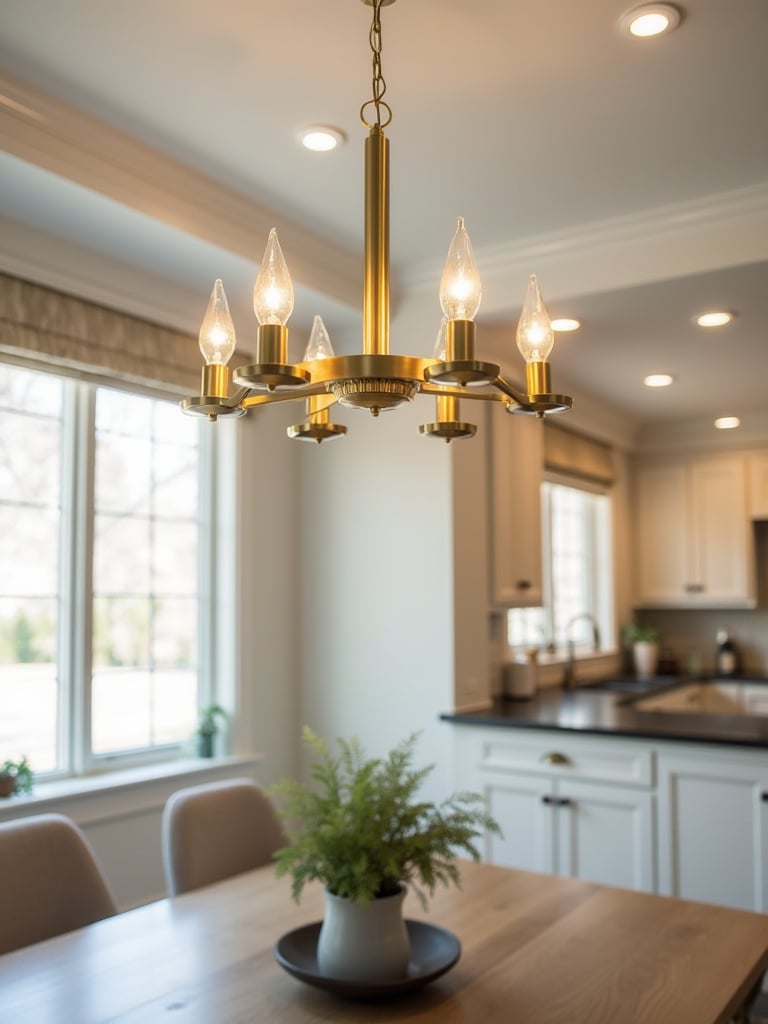
Harmonizing is beautiful and serene. You pick a dominant metal—say, aged brass—and stick with it for your main pieces. It creates a calm, cohesive flow. Artful contrast, however, is where the magic happens. A bold, Matte Black chandelier in a room with soft brass accents? Stunning. The black grounds the space and makes the brass feel even warmer and more luxurious. The trick is to not go overboard. Pick two main metals and maybe add a tiny third as an accent. It shows you’re curating, not just accumulating.
8. Explore Materials Like Crystal, Metal, or Wood for Unique Aesthetics.
The material of your chandelier speaks a language all its own. Crystal isn’t just sparkly; it speaks of opulence, tradition, and celebration. It catches and refracts light, sending rainbows across the room. It’s the glamour of Old World Europe. Wood, on the other hand, speaks of nature, warmth, and earthiness. A carved wooden chandelier might evoke a Polish folk art tradition, bringing a sense of history and groundedness to your home.
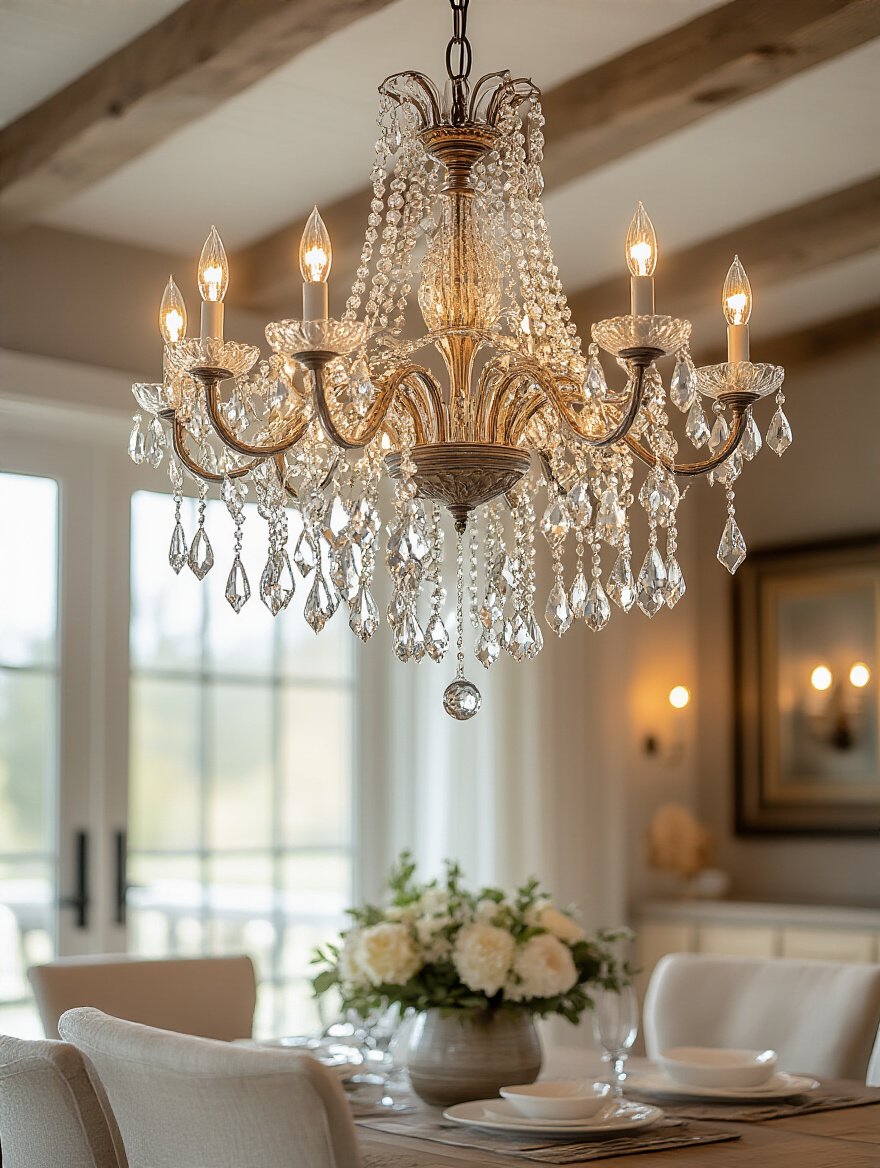
Then there are materials like paper or silk, often seen in Chinese lanterns. They don’t refract light; they diffuse it. They create a soft, gentle glow that feels communal and serene. Metal can be industrial and raw or polished and sleek. Think about the feeling you want to create. Do you want drama and sparkle? Cozy warmth? Serene calm? The material will get you there faster than any other element.
9. Unify Your dining space by Co-ordinating With Other Lighting Fixtures.
Your chandelier is the star of the show, but it shouldn’t be a solo act. The best-lit rooms use a layered approach. Think of it as a family of lights. Your chandelier is the matriarch or patriarch—the undeniable focal point. But you also have wall sconces, a lamp on a sideboard, or recessed lighting. These are the supporting cast.
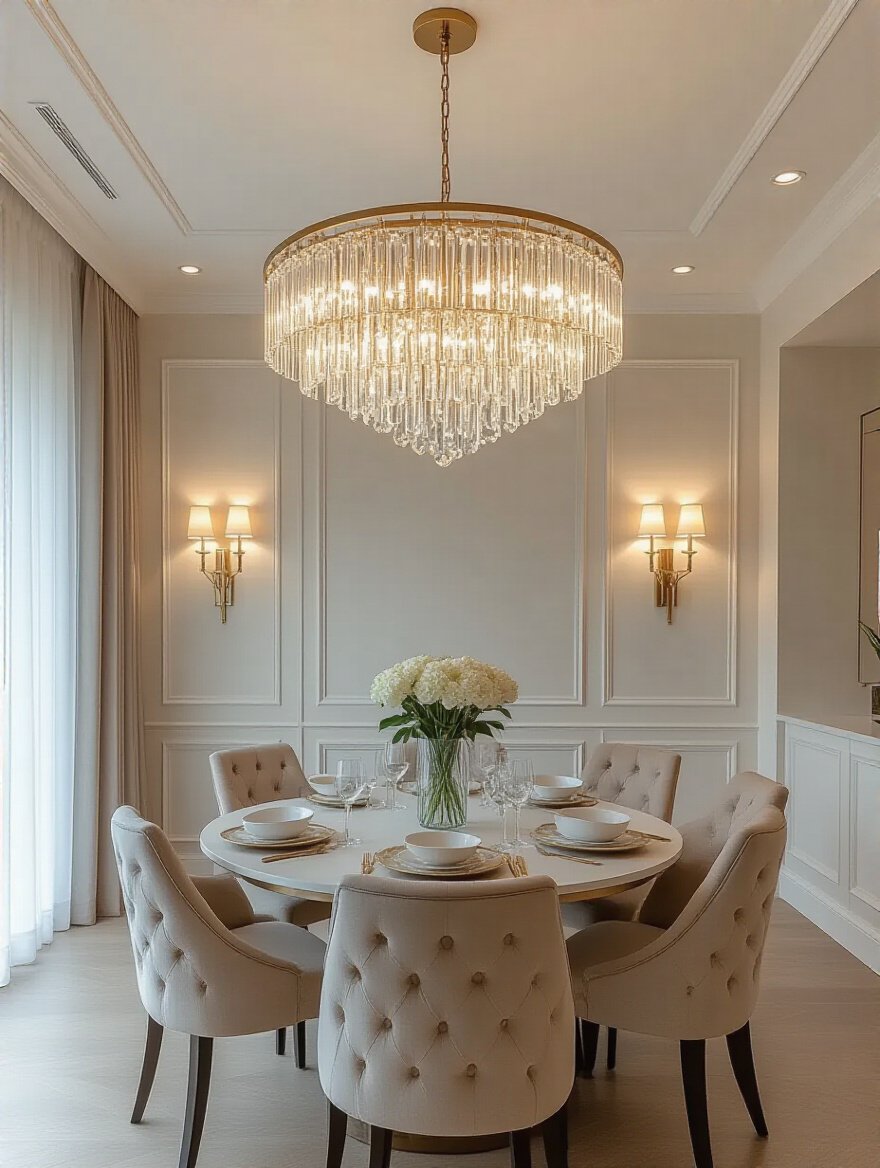
They don’t all need to be from the same “matching set.” In fact, it’s better if they’re not. But they should feel related. Perhaps they all share the same finish, like matte black. Or maybe they all have a similar form, like a gentle curve. My shortcut is the “Family Vibe” test. Do they look like they belong in the same family photo? If your chandelier is ornate and traditional, your sconces can be a simpler, modern interpretation of that same feeling. It creates a rich, cohesive story.
10. Learn How to Responsibly Mix Chandelier Styles for Eclectic Charm.
This is my favorite topic, because it’s at the heart of my own heritage. How do you blend a Polish appreciation for hearty, ornate craft with a Chinese reverence for minimalist harmony? You build a bridge. Responsible mixing isn’t chaos; it’s a curated conversation between different worlds. You can’t just throw a rustic fixture, a mid-century table, and bohemian chairs in a room and hope it works.
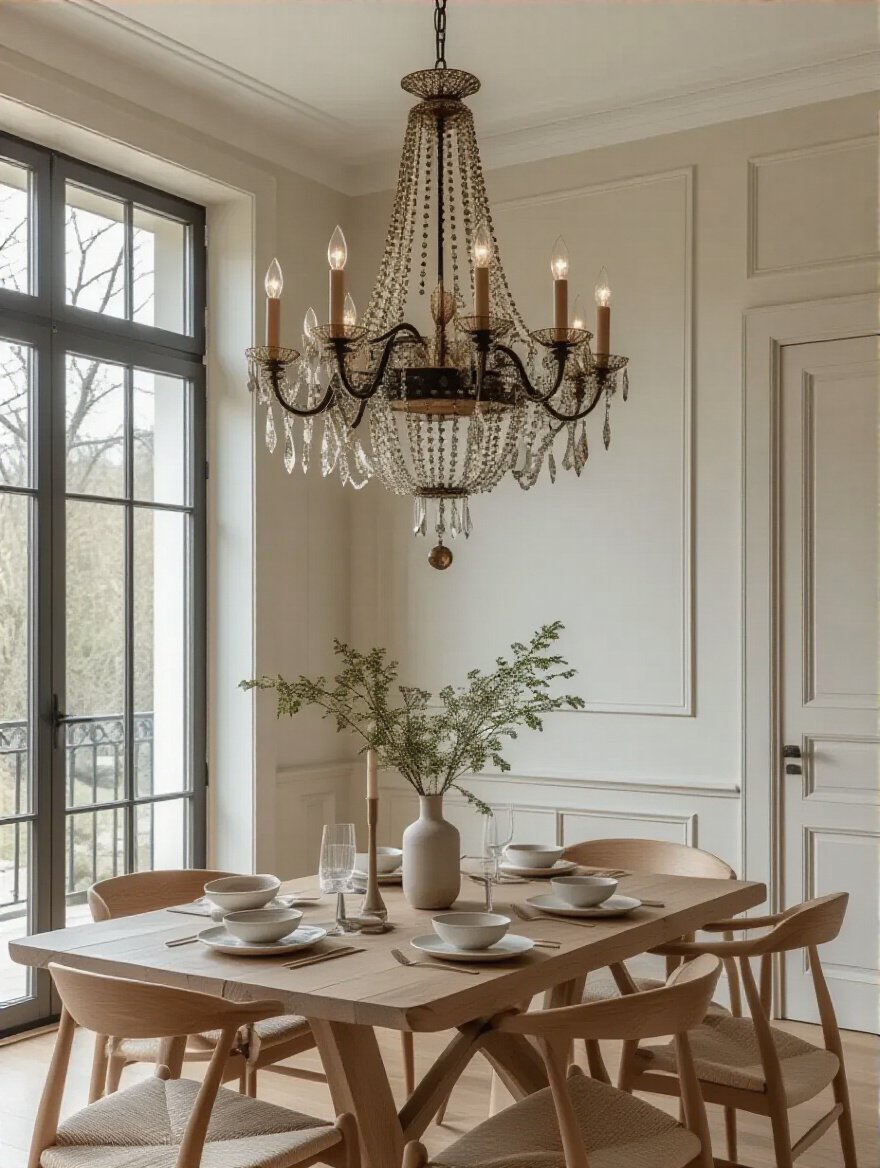
Find the common thread. If you want to hang a dramatic, industrial chandelier over a traditional wooden farmhouse table, the bridge could be a shared material, like black metal. The legs of the table and the frame of the light are speaking the same language, even if they have different accents. My favorite confession: I used to think eclecticism was just “anything goes.” Then I learned the hard way with a client’s project that it’s actually the most disciplined style of all. You need a dominant theme, and the other elements must serve that theme, even as they contrast with it.
Practicality & Functionality: Optimizing Illumination & Installation
Okay, let’s get practical. A beautiful chandelier that doesn’t work for your life is just an expensive sculpture. The final layer of a perfect choice is making sure it’s functional, safe, and easy to live with. This is about making your beautiful space work for your real life.
11. Implement a Dimmer Switch for Versatile Dining Ambiance Control.
I’m just going to say it: installing a chandelier without a dimmer switch is a design crime. It’s the single most important and least expensive tool you have for controlling the energy of a room. No other element can take your dining space from a bright, functional area for doing taxes to a low, intimate glow for a romantic dinner so quickly.
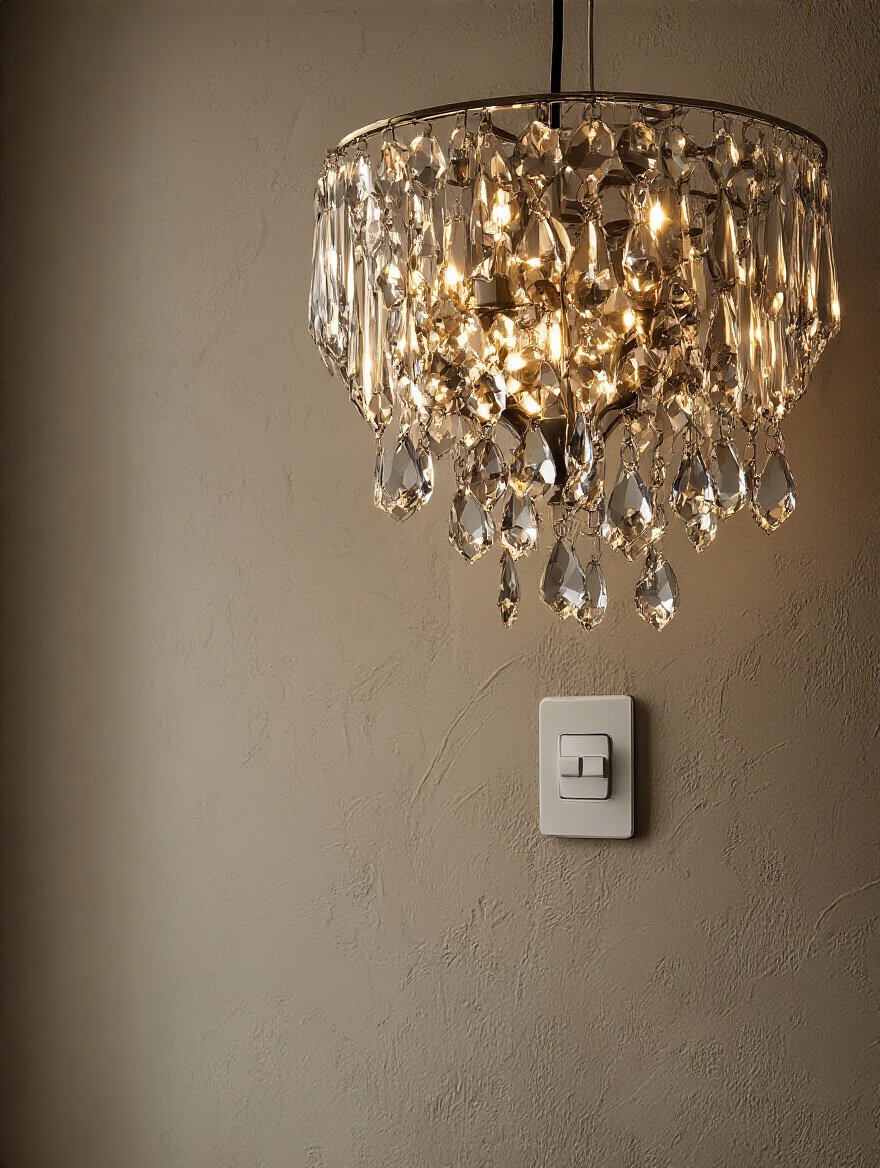
Think of it as having a volume knob for light. You wouldn’t want to listen to music at full blast all the time, so why would you live with your lights on at 100%? A dimmer allows you to tailor the ambiance to the moment. It makes your home feel more responsive, more intuitive, and infinitely more luxurious. Don’t skip this. It’s a non-negotiable for a well-designed space.
12. Choose Bulb Types (LED, Incandescent) for Desired Light Quality.
This can get so technical with talk of CRI and Kelvin, but it boils down to two simple questions. First: Does this light make my food and the people I love look good? That’s the Color Rendering Index (CRI). You want a high CRI (90+) so your steak looks rich and brown, not grey, and your friends’ skin tones look warm and healthy.
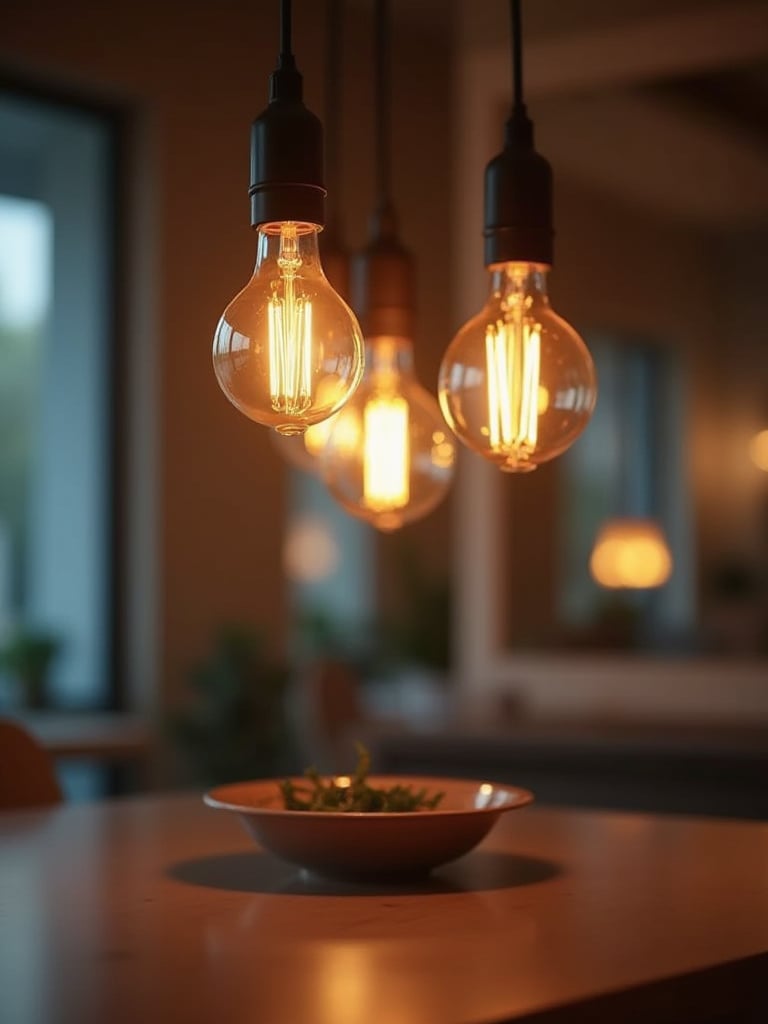
Second: Does this light feel cozy or clinical? That’s color temperature, measured in Kelvin (K). For a dining room, you almost always want a warm white, somewhere between 2700K and 3000K. It mimics the gentle glow of candlelight. Anything higher (like 4000K+) starts to feel like an office or a hospital. I learned this the hard way when I bought “daylight” bulbs once. My beautiful, warm dining room suddenly felt like a laboratory. Stick with warm LEDs with a high CRI.
13. Assess Ceiling Box Support for Secure and Safe Chandelier Installation.
This is the one tip that could save you thousands of dollars in damage and keep you safe. You can’t just hang any chandelier from any old electrical box in the ceiling. Standard boxes are only rated to hold up to 50 pounds, and many beautiful chandeliers, especially those with real crystal or solid metal, weigh more than that.
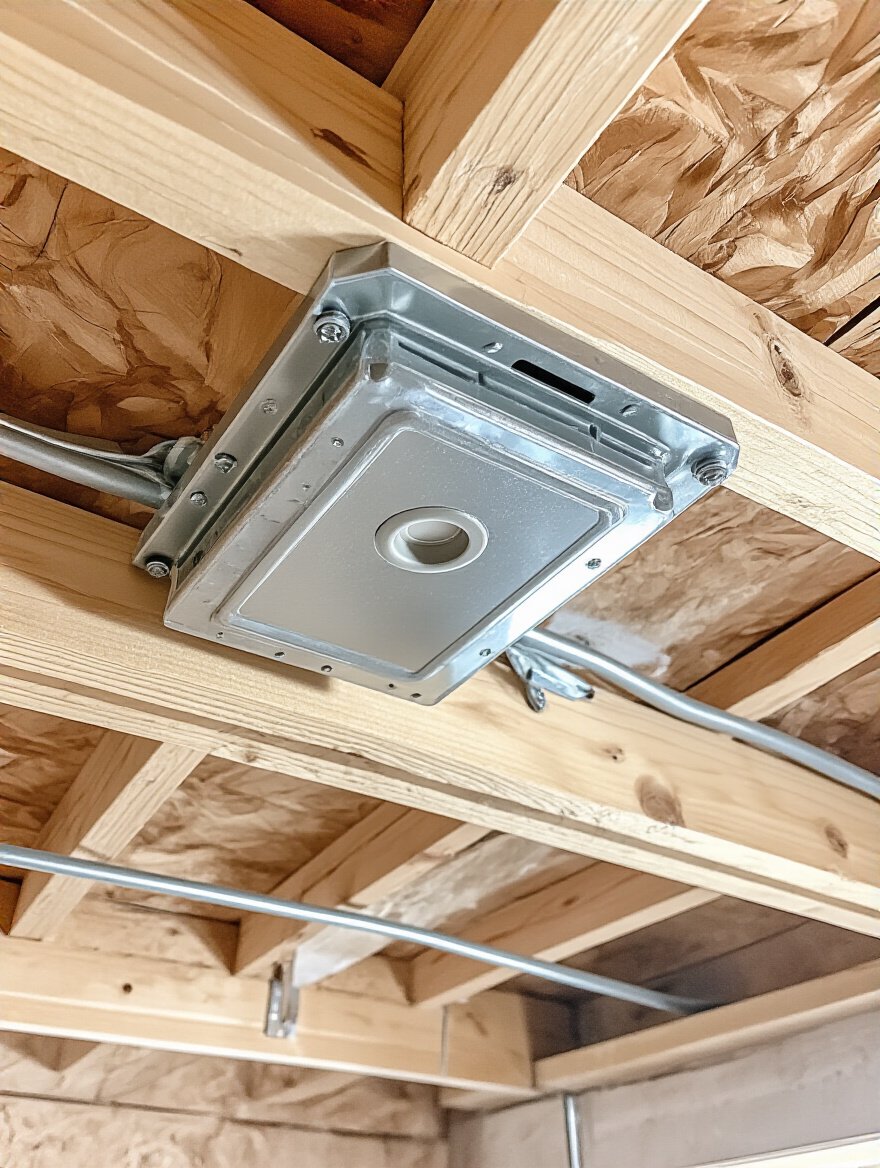
Hanging a heavy fixture on an inadequate box is a catastrophe waiting to happen. It can rip out of your ceiling and come crashing down on your table. Before you install, you or your electrician must check the box. If your fixture is over 50 pounds, you absolutely need a heavy-duty, fan-rated box that is securely braced to the ceiling joists. This isn’t a place to cut corners. It’s about respecting the weight and presence of the piece you’re bringing into your home.
14. Consider Chandelier Weight to Ensure Proper Structural Reinforcement.
This goes hand-in-hand with the ceiling box, but it deserves its own point. The sheer physical weight of your chandelier is a critical factor. For a piece that’s extremely heavy—say, over 150 pounds—even a fan-rated box might not be enough. You might need custom structural reinforcement, like extra wood blocking installed between the joists in your ceiling.
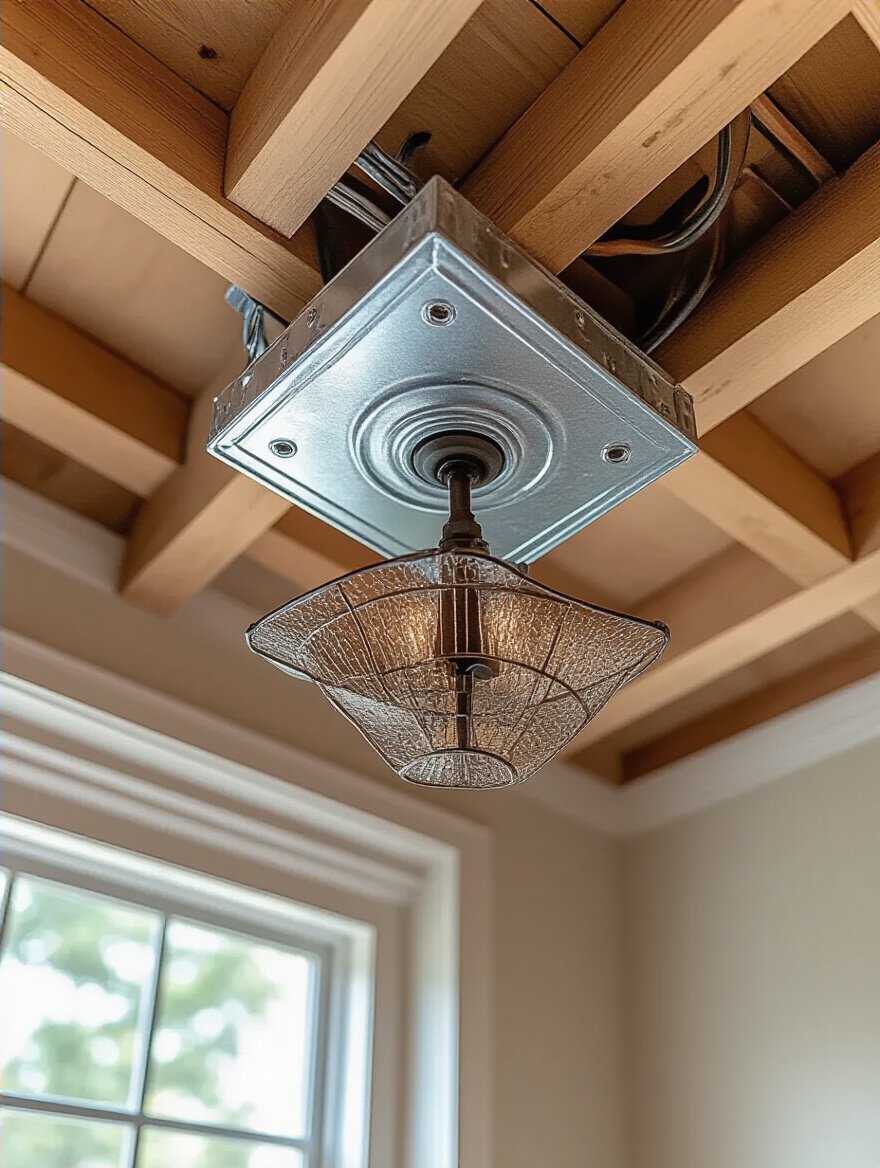
I once worked on a project with a massive, custom-forged iron chandelier that was over 200 pounds. We had a structural engineer consult on the installation. It might sound like overkill, but that’s what’s required to hang something of that substance safely and permanently. When in doubt, always over-engineer the support. The peace of mind is worth far more than the small extra cost.
15. Prioritize Easy Cleaning Access to Maintain Your Chandelier’s Sparkle.
Here’s a confession: I love the look of an incredibly intricate crystal chandelier, but I hate cleaning them. Be honest with yourself. Are you the kind of person who will lovingly polish 200 individual crystals with a cotton glove, or will you let a fine layer of dust and kitchen grease accumulate until the sparkle is gone?
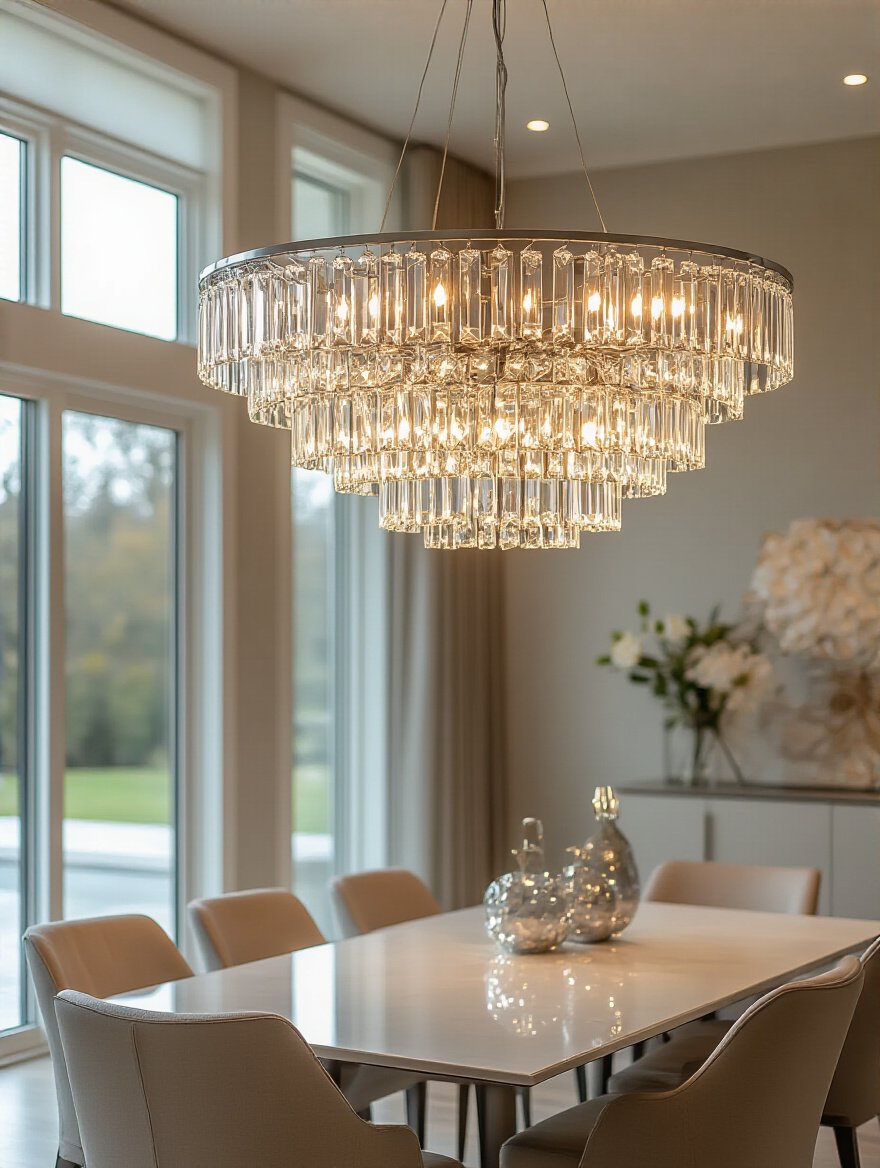
If you’re not prepared for the upkeep, choose a design with simpler lines and more accessible surfaces. A large drum shade or a minimalist sputnik fixture can be dusted in seconds. If you have very high ceilings, a fixture with hundreds of parts is a serious commitment. Choosing a piece you can realistically maintain means it will look beautiful for years, not just for the first month.
Advanced Considerations & Long-Term Care
You’ve found the one. It’s the right size, the right style, and it’s safely installed. Now, let’s talk about the final touches and the long-term relationship. These are the details that take a good choice and make it a truly brilliant part of your home for years to come.
16. Explore Smart Chandelier Features for Modern Convenience and Control.
Smart technology isn’t just a gimmick anymore; it’s about making your home more intuitive. Imagine walking into the dining room and saying, “Alexa, set the lights for dinner,” and having the chandelier dim to a perfect 40% warm glow. Or scheduling the lights to come on softly as the sun sets. It’s modern magic.
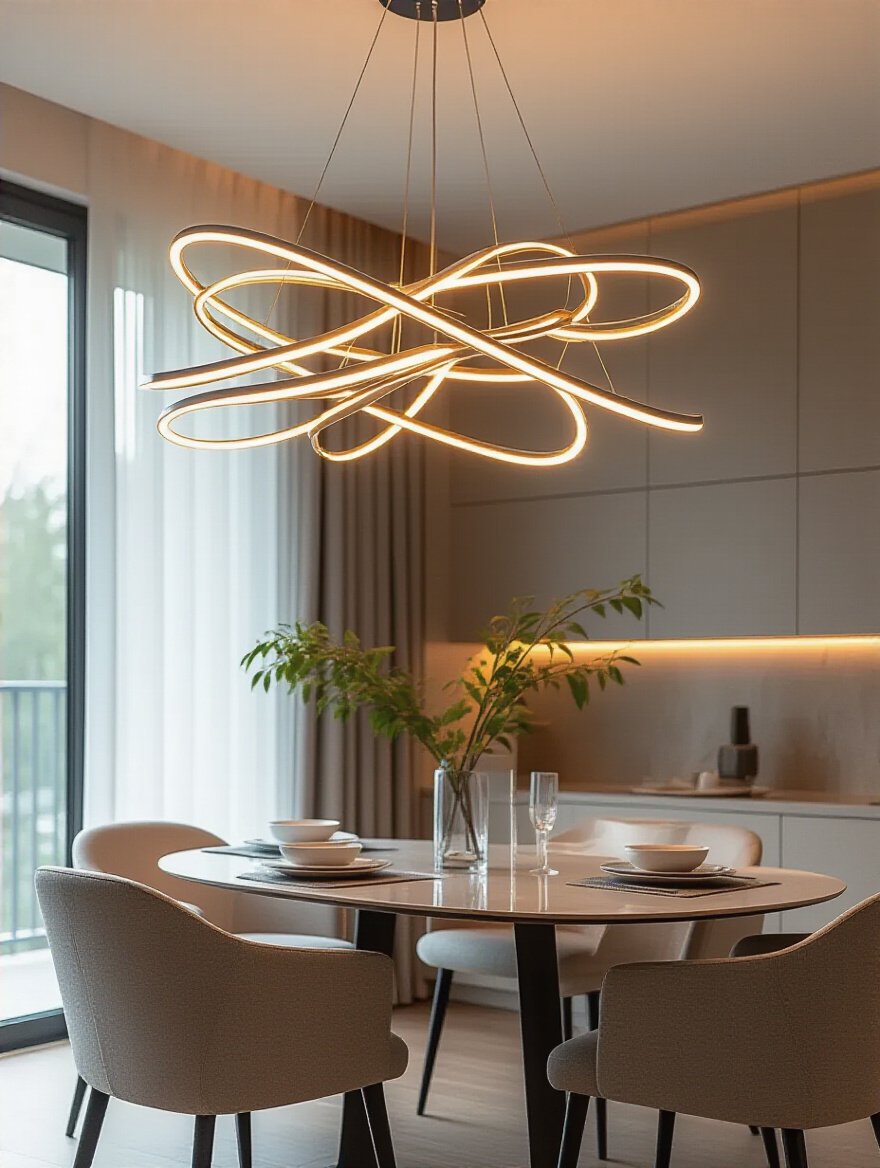
This isn’t about tech for tech’s sake. It’s about using technology to effortlessly create the right feeling for the right moment. Some smart chandeliers even allow you to change the color temperature, shifting from a cool white for daytime work to a warm, cozy light for the evening. It’s the ultimate in customizable ambiance, all controlled from your phone or with your voice.
17. Understand Routine Cleaning and Polishing Techniques to Preserve Luster.
Taking care of the beautiful objects in your home is a form of respect—for the object, for the person who made it, and for yourself. A routine cleaning will keep your chandelier from losing its light. Dust and grime can reduce a fixture’s brightness by up to 30%, which completely defeats the purpose of choosing it in the first place.
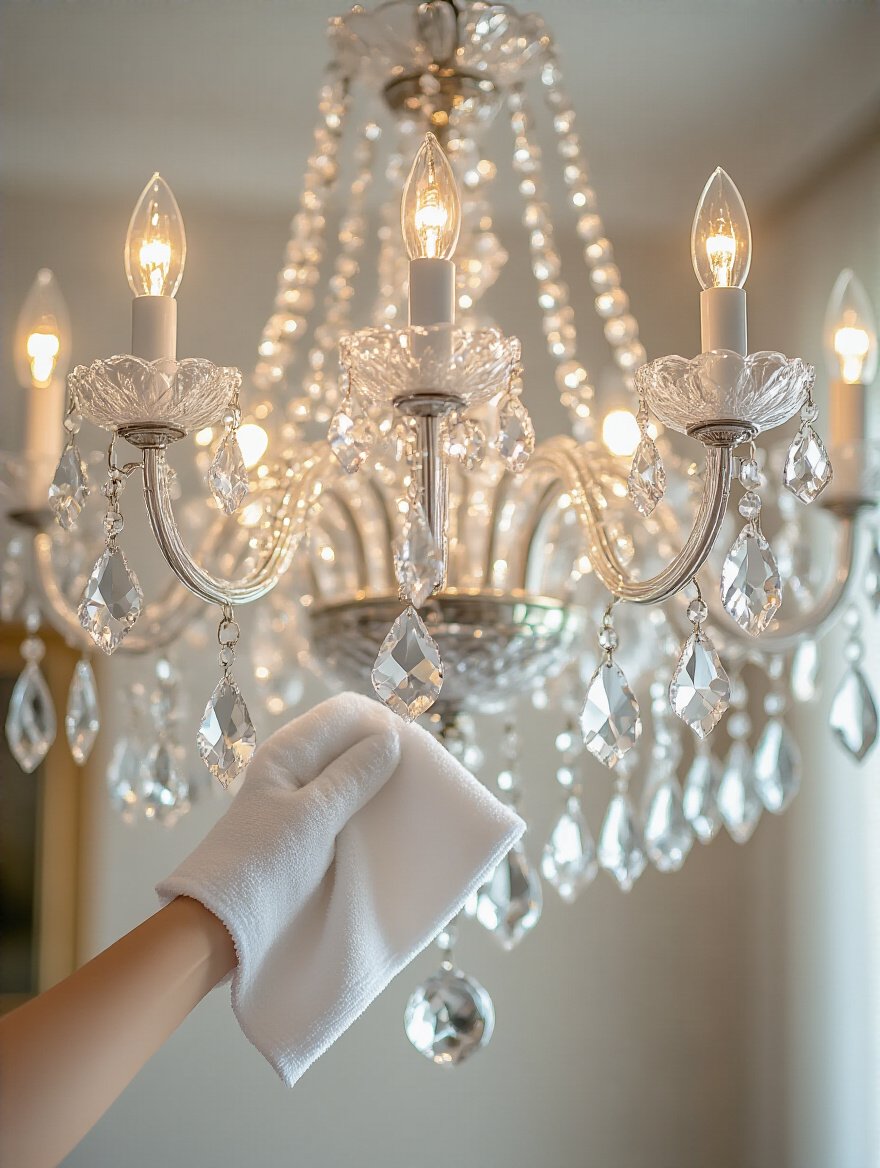
For a basic clean, turn off the power, and use a simple microfiber or feather duster. For a deep clean, never spray cleaner directly on the fixture. Spray a gentle, pH-neutral cleaner (or just distilled water) onto a soft cloth and wipe down each part. For crystal, wearing white cotton gloves to wipe each piece prevents fingerprints and preserves the sparkle. This small ritual keeps the heart of your dining room brilliant.
18. Adapt Chandelier Placement and Installation for Sloped Ceilings.
A sloped or vaulted ceiling is a beautiful architectural feature, but it can make a chandelier hang at a sad, crooked angle if you’re not careful. This completely disrupts the harmony of the room. It’s essential to use a sloped-ceiling adapter, also called a swivel canopy. This little piece of hardware allows the fixture to hang perfectly straight, even when the base is mounted on an angle.
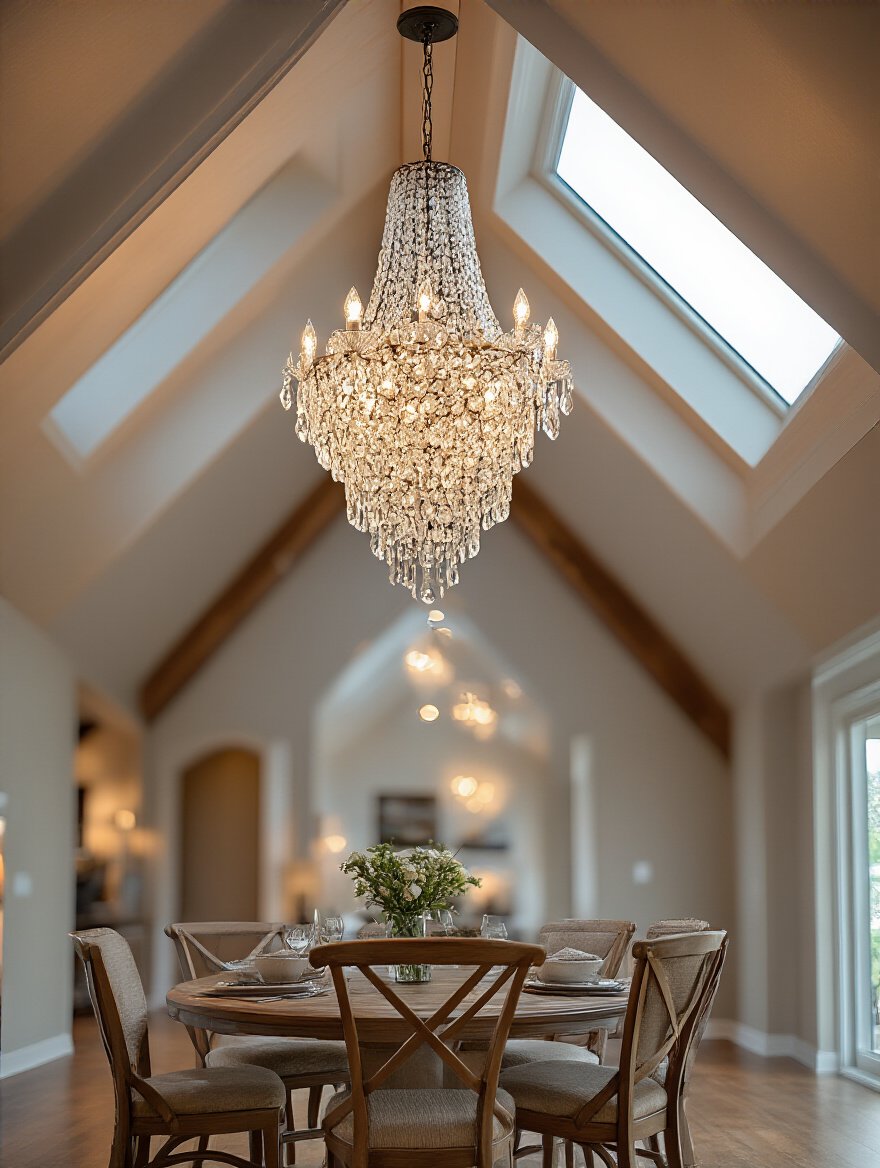
Most quality chandeliers are compatible with these adapters, or even come with one. It’s a small detail that makes a massive difference. A chandelier that hangs perfectly plumb, or vertically true, shows an attention to detail and care that elevates the entire space. It’s a sign that the design was thoughtful, not just an afterthought.
19. Consider Resale Value and Timeless Appeal in Your Chandelier Investment.
Let’s reframe “resale value” as “timelessness.” Chasing a hot trend is a surefire way to make your dining room look dated in five years. But investing in a fixture with timeless quality and a classic silhouette is a decision that will pay dividends for decades, whether you stay in the home or sell it.
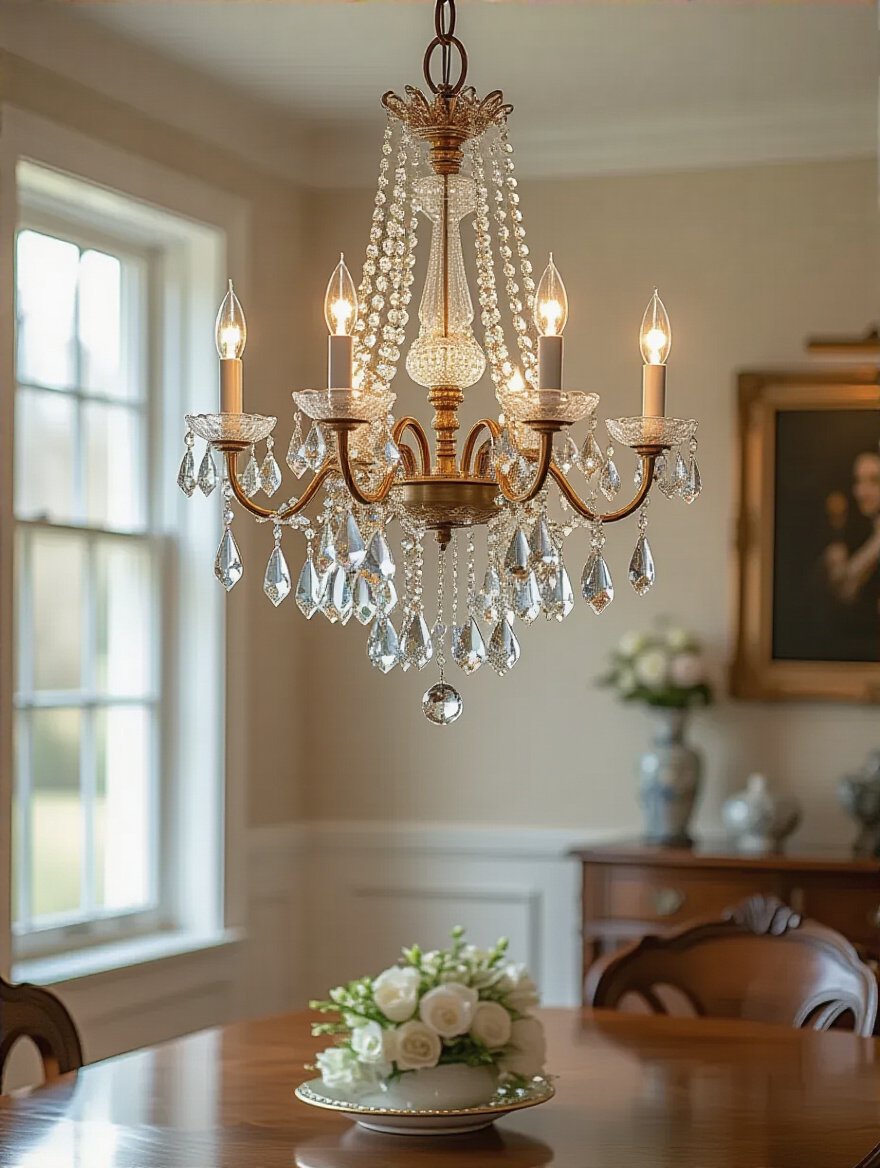
A high-quality fixture in a classic material like brass or crystal becomes an architectural asset. It signals to potential buyers that this is a well-cared-for, high-quality home. But more importantly, it becomes a piece you’ll love for years. It won’t feel stale or out of style. It becomes a permanent part of your home’s story, something you might even pass down—the true definition of a valuable investment.
20. Evaluate Unique Design Features Like Candlelight Effects or Ret retractable Chains.
Finally, look for that little touch of magic that makes a chandelier truly special. Some modern LED fixtures have a “candlelight mode” that mimics the soft, subtle flicker of real flames, giving you all the romance with none of the fire risk. It’s an incredible way to change the mood instantly.
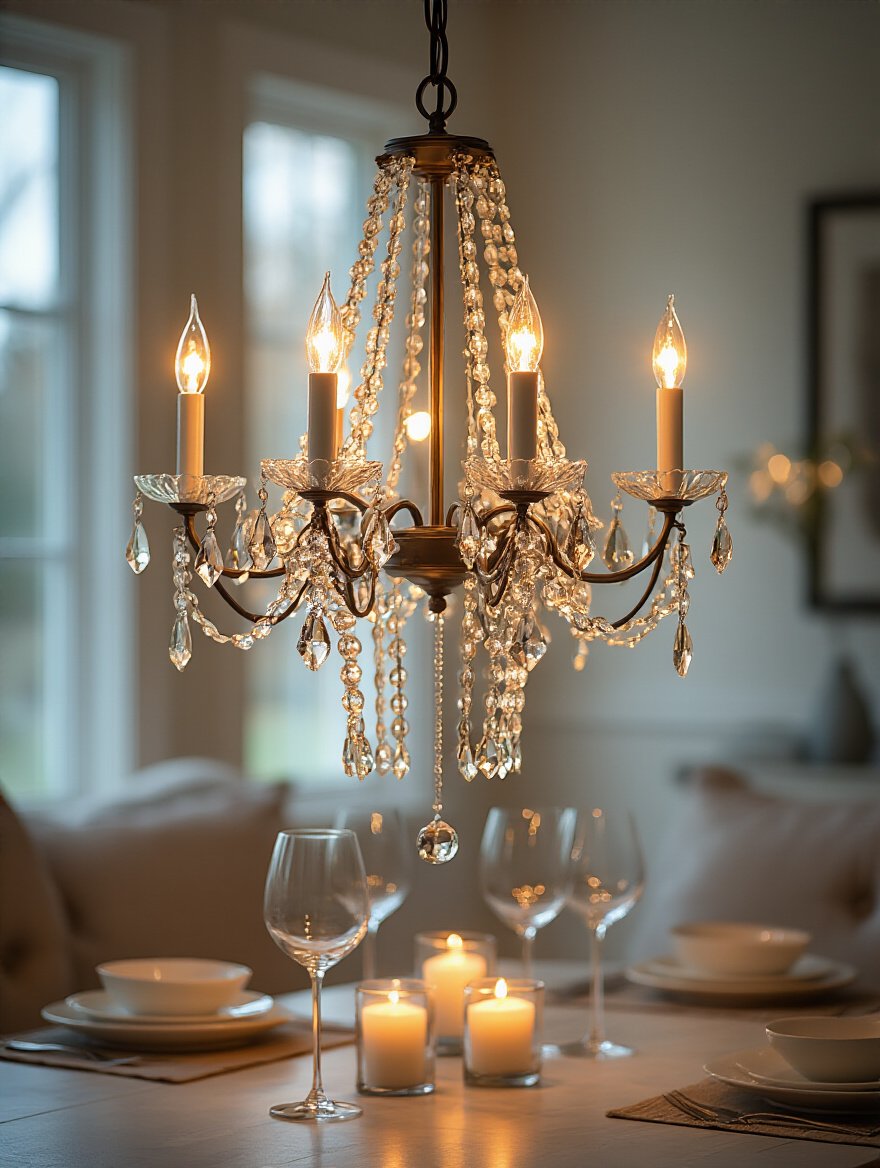
Another brilliant feature for multi-use spaces is a retractable chain or motorized lift. This allows you to lower the chandelier for an intimate dinner, creating a focused pool of light, and then raise it up high and out of the way for a crowded party, ensuring no one bumps their head. These unique features aren’t just novelties; they are functional innovations that make your chandelier more versatile and more integrated into the real flow of your life.
In the end, choosing a dining room chandelier is a journey. It starts with practical rules and measurements, but it ends with a piece that should feel like it was made just for you. It is the narrator that sets the scene for family feasts, quiet conversations, and moments of celebration. It should be a reflection of your heritage, your travels, and your personal story. Trust your instincts, honor the space, and choose the light that will make your home, and the people in it, truly shine.
